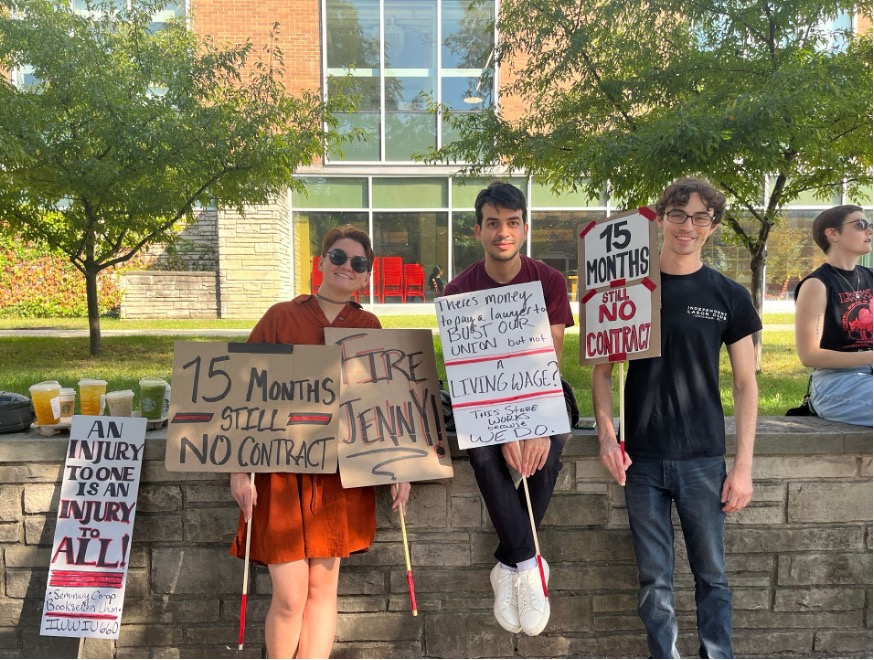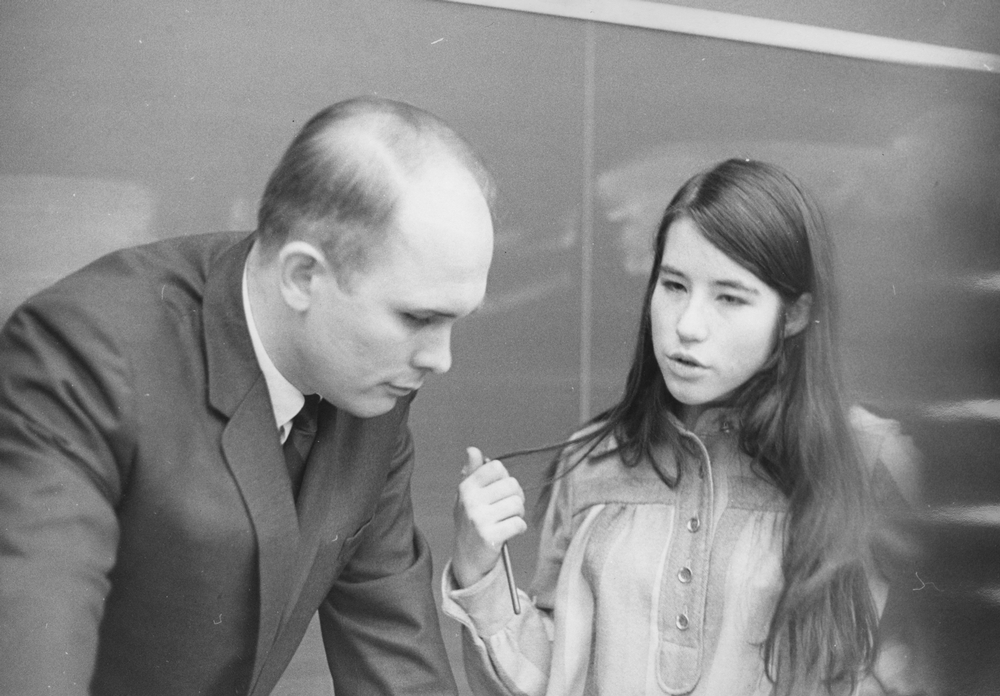Grease: staple of the college diet, unpleasant side effect of days without showering and, for one U of C student, free car fuel. This past June, fourth-year in the College, Viva Max Stefanishin took a crash-course in auto mechanics and, with the help of a few friends, converted a diesel powered 1987 GMC Suburban to run on excess cooking grease in addition to conventional diesel fuel.
Upon completion, Stefanishin, along with a group of friends that included second-year in the College Crystal Fry, spent nearly three months touring the country from coast to coast in their converted Suburban, demonstrating the feasibility and practicality of a diesel/vegetable oil hybrid.
Stefanishin’s interest in a grease-powered car grew out of her desire to illustrate the practicality of an environmentally friendly lifestyle and her frustration with the inaction of some of her peers. “A lot of middle-class kids go to the concerts I go to and a lot of bands are feeding ideas about changing lifestyle, but I didn’t feel like enough was being done on a practical level,” Stefanishin said.
A grease powered car appealed to Stefanishin because it was both practical and visible to a large audience. “I figured if I got an alternative power car, then anywhere I went I would be spreading a message,” she said.
Stefanishin’s first big task toward realizing her goal of creating an alternative power car was to purchase a vehicle. In order to finance the car, Stefanishin relied heavily on a $5,000 Dean’s Grant, which she received upon entering the University in 1999. Dean’s Grants are awarded to a limited number of incoming first-year students who demonstrate creativity, dedication and leadership in their academic and extra-curricular lives during high school. Grant money may be spent to further research and travel plans at the discretion of the recipient. For Stefanishin, this meant putting $4,000 dollars toward the purchase of the ’87 Suburban, making various upgrades to the car, and financing the fuel conversion process.
The technique used by Stefanishin to convert her GMC Suburban into a vegetable oil-petrol hybrid is known as “Grease Car,” a concept developed by Justin Craven while enrolled in Hampshire College from which he recently graduated. “Grease Car” is one of several existing processes that substitute vegetable oils for conventional diesel fuel. There are pros and cons of each method, however “Grease Car” appealed to Stefanishin because of its fuel source: unadulterated excess cooking grease which is both free and readily available throughout the country, perfect for her tight budget, peripatetic project.
To use unadulterated vegetable oil as a substitute for diesel (known as “dino,” in the parlance of the alternative fuel community), the grease must be heated to 160 degrees Fahrenheit so that coagulations break apart and do not clog engine filters. Using the “Grease Car” method to accomplish this, Stefanishin starts her car using conventional diesel fuel until the car’s radiator has generated enough heat to thin the grease.
Once the grease has reached the necessary temperature, Stefanishin simply flips a switch on her dashboard, allowing the car to draw grease from a 17-gallon tank in the trunk of the vehicle. The tube that the grease flows through is actually a small tube running through a larger one. Grease passes through the inner channel, while coolant circulates through the outer, regulating the temperature of the grease as it passes from the tank to the engine.
All tolled, Stefanishin’s system cost about $800, with an additional $200 for a mechanical hand-pump/grease filter. Prices of “Grease Car” systems vary, however; according to Stefanishin, one man spent as little as $150 for a strip-down model.
In addition to making use of a renewable energy source, emission rates of veggie-oil powered cars are below those of petroleum users, especially in greenhouse gases. Moreover, according to the inventor, a perfectly functioning “grease car” will run at the same efficiency as diesel and will provide comparable power.
Stefanishin and her friends had planned to be at a music festival in Quincy, CA, on July 3rd. Working within the space of about a week, Stefanishin purchased the Suburban in Connecticut and drove it to North Hampton, MA, to the shop of “Grease Car” inventor Justin Craven. Much to her chagrin, Craven was busy working on other cars and could not convert her vehicle on such short notice. The task fell accordingly to Stefanishin and her friends, none of whom had the technical expertise required to do the job. “He gave us a manual and the first instruction was ’empty out the radiator,’ we didn’t even know where the radiator was,” Stefanishin said.
Stefanishin and her friends learned the dos and don’ts of “Grease Car” travel through trial and error, a learning process that was made more difficult by technical problems that arose in the hastily constructed vegetable oil fuel system. As a result, they were forced to rely on conventional diesel fuel more heavily than an expertly constructed, optimally functioning “Grease Car” would have.
By the end of the summer, as the group gained more and more experience, the car performance improved dramatically, evidenced by the fact that they made it from New Jersey to Virginia on just one tank of vegetable oil.
When in need of fuel, Stefanishin and her friends frequented Asian restaurants, since she found their oil to be of a generally higher quality. Convincing restaurateurs to part with their grease was not difficult once they overcame their initial suspicion, and the messy procedure often provided a source of entertainment to curious business owners: “We were in their dirty grease pits and they just got a kick out of it,” Fry remembered.
The van reached Quincy, CA two days behind schedule, but in time for the High Sierra music festival. Stefanishin and her friends set up an informational table at the event and told those interested about the benefits of the grease-powered machine, a procedure they repeated at numerous music festivals throughout the country.
Response to the Suburban “Grease Car” was overwhelmingly positive, according to Stefanishin. “We really didn’t push it at all. People saw our signs and were curious,” she said. Interest was not confined to the festivals Stefanishin visited. People expressed curiosity at gas stations and on the open road, thanks to the words “powered by veggie oil” painted on the truck’s exterior.
“We’re not doing this to make the world use vegetable oil,” she said. “The point is there are other options. As people lean about this and interest increases, improvements in technology are going to be made. “The Suburban is currently in Hyde Park and continues to attract attention.








